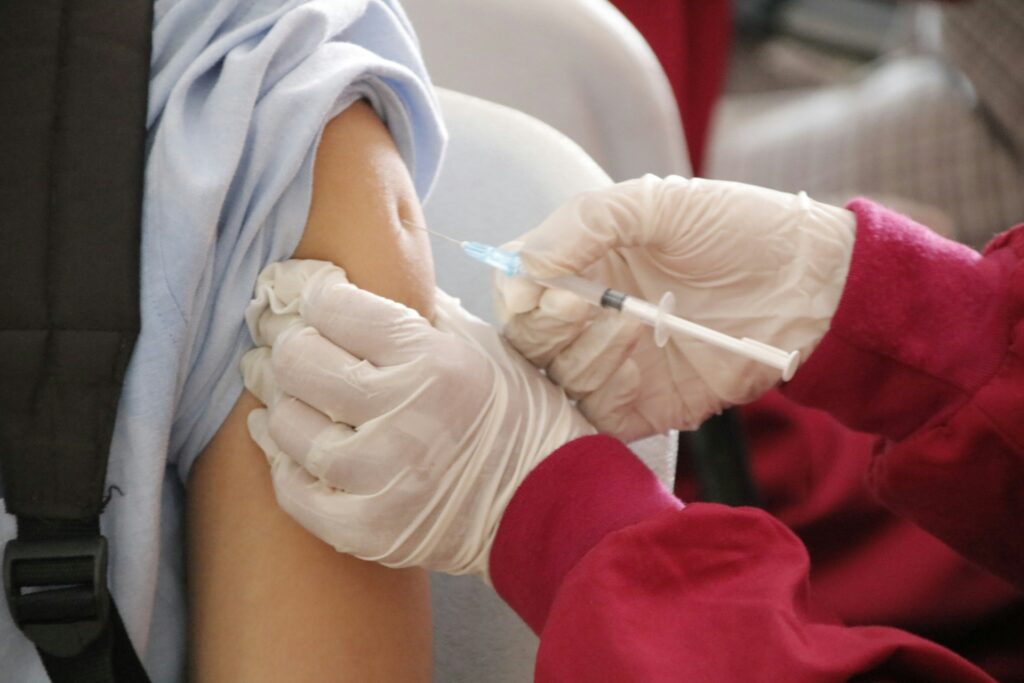As of May 16, there were 139 confirmed measles cases in the United States this year, according to the Centers for Disease Control and Prevention (CDC), with more than half (54%) requiring hospitalization. The patient population hit the hardest is children under 5 years old, making up 45% of all 2024 cases and 63% of those hospitalized. These numbers are a marked shift given that measles had been declared eliminated from the U.S. in 2000.
The pediatric population is also at the highest risk of long-term complications. A measles infection can be a disabling event leading to hearing and vision loss, brain and respiratory damage, and even subacute sclerosing panencephalitis (SSPE), a “very rare, but fatal disease of the central nervous system” that can cause “cognitive decline, behavior changes, issues with motor functioning—such as uncontrollable movements and seizures—and blindness,” per the CDC.
As the number of measles cases rises, healthcare organizations are working to increase measles vaccine rates. Measles is the “canary in the coal mine” when it comes to predicting the emergence of other preventable diseases, because measles is the most contagious human virus and, therefore, usually the first out of the gate, explains Patricia (Patsy) A. Stinchfield, RN, MS, CPNP, president of the National Foundation for Infectious Diseases (NFID), in an interview with Bio.News. According to NFID, measles is so contagious that if one person has it, up to 90% of the people close to that person who are not immune will also become infected.
“The rise of measles is of great concern—a very safe and effective vaccine is available to prevent the disease and greatly decrease the burden on children, parents, schools, and the entire healthcare ecosystem,” says Phyllis Arthur, Senior Vice President, Infectious Diseases & Emerging Science Policy at Biotechnology Innovation Organization (BIO).
“Our national numbers are relatively low [for measles cases], but we can’t be complacent,” Stinchfield recently wrote in The Hill. “The disease is not globally contained, and in the U.S., it poses a grave threat in susceptible communities, where low vaccination rates have left too many people—both children and adults—in danger.”
“We are now wondering, are we going to have a whooping cough (pertussis) outbreak or maybe Haemophilus influenzae type B (Hib disease)? What other diseases that we’ve been able to control are going to reemerge?” Stinchfield asks.
The value of measles vaccination
“People with measles have been out of work, out of school, and even out of society,” Stinchfield explains. “That’s a really difficult cost to quantify, but it’s a significant impact when people have to be in quarantine or isolation for 21 days.”
While it is possible to quantify the cost of vaccine programs, it is harder to quantify the costs associated with unvaccinated populations, in part because the long- and short-term effects are dynamic and, at times, subtle. But that has not prevented researchers from trying.
The CDC cites a study that found, based on data from 10 case studies ranging from 2001 through 2018 in the U.S., “the median total cost per measles outbreak was $152,308,” while “the median cost per case was $32,805.” Another study the CDC references found that the cost of just 72 confirmed cases of measles in a single county resulted in an estimated cost of $3.4 million.
Many of these studies focus on direct expenses such as hospitalization costs, public health department response, and productivity loss, but there are a variety of other harder-to-measure costs. For example, long-term effects can include a condition called “immune amnesia,” which “makes people with measles vulnerable to secondary infections for several years after their measles infection has resolved,” according to the American Society for Microbiology (ASM). And any taxing infection can lead to autoimmune or immunocompromised issues for years after the infection has passed.
The cost of being unvaccinated
Stinchfield and her colleagues at NFID understand that to properly convey these risks, you have to consider the perspectives of your audience.
Case in point: When speaking with a men’s group in Minnesota, composed of many CEOs and high-ranking business professionals, Stinchfield “didn’t focus so much on the stories that tugged on the heartstrings. They’re all bottom-line people, so I got into the business case for vaccination.”
“I went to them and said, ‘I have a business proposition for you,’” she continues. “What if I told you that my business proposition was going to be between 97% and 100% effective? It’s going to cost us a penny on the dollar? And the return on investment is going to be huge? And what if I told you that we have the data to back it up?”
Her strategy worked. “I had a couple of attendees come up to me at the end of the presentation and tell me that they were ready to be very angry at me that day. They didn’t want anything to do with a vaccine talk,” Stinchfield recalls. “But by the end of my presentation, one of them even said that he was going to get his COVID-19 vaccination for the first time.”
But sometimes you do want to tug at the heartstrings—for example, when talking to families about vaccinating their children.
“I remember a couple of patients in the ICU, when I was an infectious disease nurse practitioner,” says Stinchfield. “There was a little girl who had encephalitis, which resulted in a big abscess on her brain. Her mom had no idea that Hib disease could cause this. But the people who told her she shouldn’t vaccinate her daughter don’t describe what she experienced. After that experience, she said to the ICU doctor, ‘I want my daughter vaccinated for everything.‘”
Often the best advocates for vaccines are parents who initially decided not to vaccinate their children.
“I just wish I could express how much regret these parents feel,” says Stinchfield. “We have to tell these stories in a HIPAA-compliant way,” she continues, “because the parents, understandably, don’t want to.”
There is no one silver bullet
“There is no silver bullet to address this problem,” Stinchfield continues. “Vaccine hesitancy is not a homogeneous issue.”
Addressing vaccine hesitancy requires equally diverse and creative approaches.
“It is incumbent upon stakeholders and policymakers in healthcare, government, and community-based organizations to come together to improve vaccination rates and increase vaccine confidence,” says Arthur. “Measles is just the tip of the iceberg—we cannot afford outbreaks of other vaccine-preventable diseases and must work together to ensure it doesn’t happen.”
NFID has a long history of collaboration with government agencies including CDC and more than 270 partner organizations. “We have done a lot of research over the years to tease out what motivates people whether or not to get vaccinated,” Stinchfield said. “The most consistent, top source cited that people respect and rely upon to help them make decisions about vaccination are healthcare professionals: nurses, physicians, and pharmacists.”
NFID is working to raise awareness and educate the broader healthcare professional community about the role of immunization in disease prevention and the importance of strong recommendations from healthcare professionals.
“I shudder to think of the price paid by that one child, that one family, compared with the negligible cost of vaccination,” Stinchfield concludes in her article for The Hill. No child should have to suffer from a vaccine-preventable disease.




